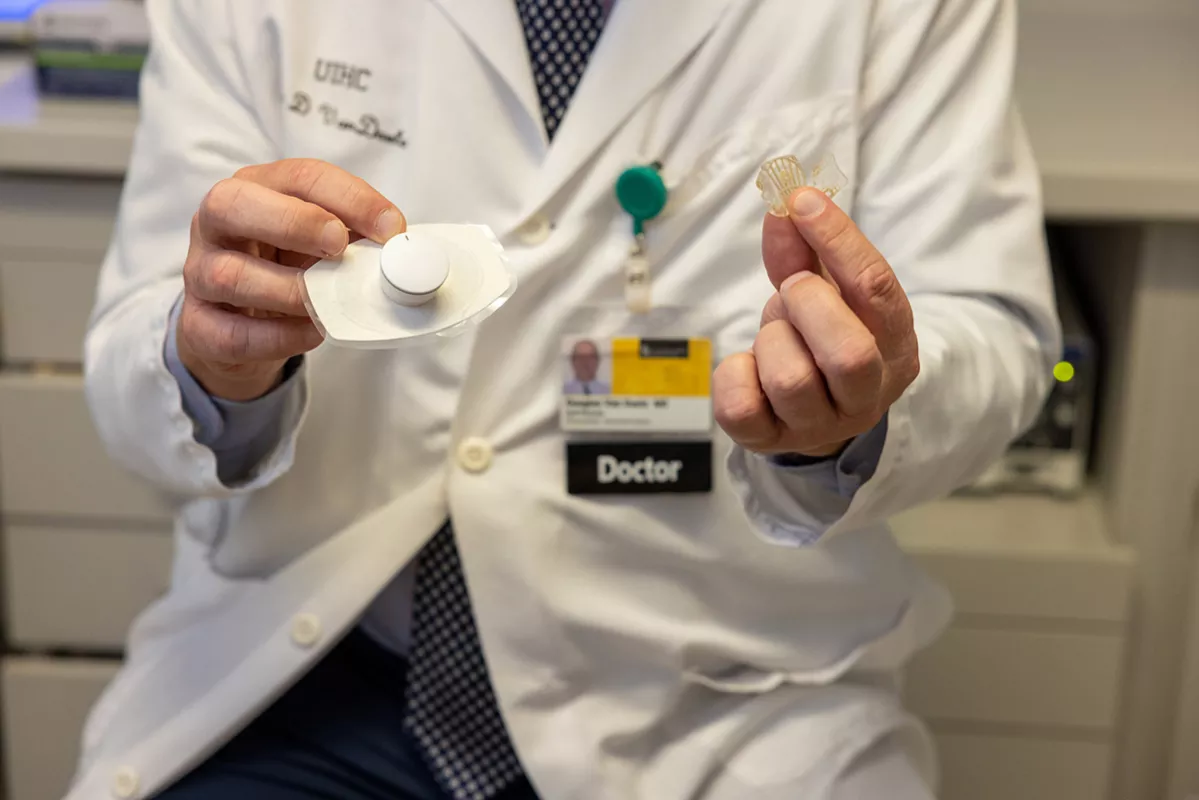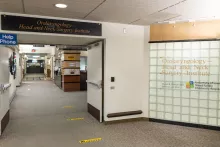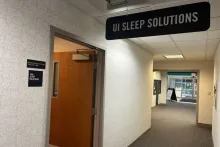Upper Airway Stimulation
- For all other requests:
- 1-800-777-8442
Do you have obstructive sleep apnea and can't tolerate using a CPAP (continuous positive airway pressure) machine? An upper airway stimulation device—such as Inspire—could help you get restful sleep.
University of Iowa Health Care sleep surgeons have implanted thousands of these devices since 2014.
Their deep experience means they can ensure that upper airway stimulation is right for you, and they can implant your device in precisely the right location.
Our team can help you if:
- You have a CPAP machine but don't use it
- You're looking for a second opinion on the best way to treat your obstructive sleep apnea
- You've been told that your sleep apnea is too complex for upper airway stimulation
- You've already had an upper airway stimulation device implanted but it's not working well

Upper airway stimulation can be your solution for better sleep, better daytime functioning, and a better quality of life.
The UI Health Care approach to upper airway stimulation
Using a CPAP machine can be challenging for some people. Upper airway stimulation provides a different kind of solution: It is a small device that's implanted in your body. It stimulates the muscles that keep your airway open while you sleep.
Your sleep surgeon will implant your device during an outpatient procedure.
Here's what the procedure looks like for an Inspire device:
- While you're asleep under general anesthesia, your surgeon will make two small incisions: one in your neck and one in your chest.
- They'll implant a small device below your collarbone. Two lead wires trail off it.
- One lead monitors your breathing, and the other gently stimulates your tongue and airway muscles to keep your airway open.
- The implantation procedure takes about three hours. Most people can go home the same day.
- Six to eight weeks after your procedure, you’ll see a UI Health Care neurology provider to activate your device. They’ll use a programmer to check the device and turn it on. This painless process takes about 30 minutes.
- They'll teach you how to control your device.
- About two months after your device is activated, you'll return to the UI Health Care sleep lab for a sleep study. This will show how effective your device is against your obstructive sleep apnea.
Are you a candidate for upper airway stimulation?
Upper airway stimulation is effective in people who:
- Have a diagnosis of moderate to severe obstructive sleep apnea
- Have not been successful using a CPAP machine
- Are at least 22 years old
- Have a body mass index (BMI) that meets guidelines
- Are in good enough overall health to have surgery
How we determine whether upper airway stimulation can help
You'll have a thorough evaluation, including a drug-induced sleep endoscopy (DISE).
While you're asleep under anesthesia, your sleep surgeon will pass a small, flexible scope through one of your nostrils. This lets them see your throat and where your breathing is blocked during sleep.
The DISE will show your surgeon why your CPAP machine isn't effective and whether upper airway stimulation will work for your obstructive sleep apnea.
If you're not eligible for upper airway stimulation
If you don't fit the criteria above, there are other options that can help.
UI Health Care experts in sleep disorders can evaluate you for surgical procedures that may help your CPAP machine work better.
Depending on your unique anatomy, options could include:
- Removing your tonsils (tonsillectomy)
- Sinus surgery
- Surgery on your nose to straighten a deviated septum (septoplasty)
- Surgery to open more space in your nostrils (turbinate reduction)
Your sleep specialist will perform a thorough evaluation to make sure you get the right care for better sleep.
Additional UI Health Care resources can help you better tolerate your CPAP machine.
For example, our neuropsychologists and rehabilitation counselors can help you use your CPAP machine more comfortably. And the UI Health Care Sleep Solutions store can help make sure that your CPAP fits and works properly.
Our Care Team

Do you have trouble using CPAP for obstructive sleep apnea?
Locations and Offices


